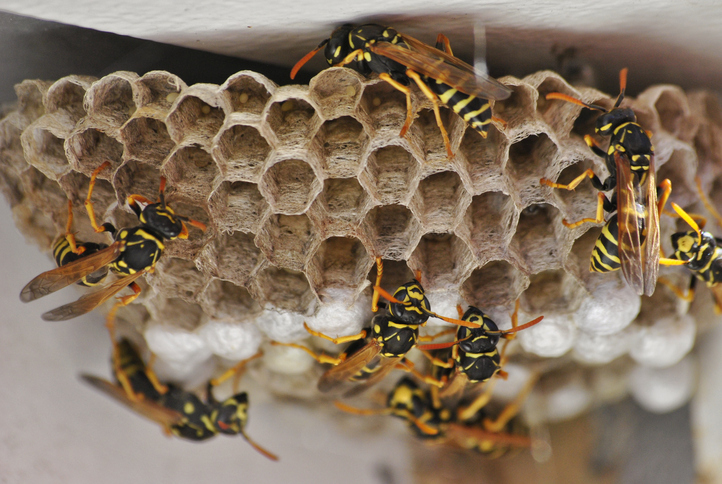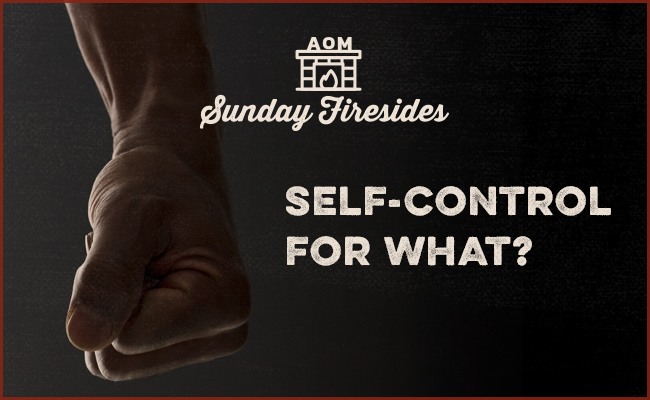
My war against annoying flying pests continues.
The battle against mosquitoes seems to be going well. Eliminating and treating standing water around my house has significantly reduced the number of mosquitoes I’ve encountered this summer. Huzzah!
It’s time to move on to my next winged enemy: the wasp.
Just look at one of those narrow-waisted, stinger-wielding insects. It looks like a total a-hole.
We get a lot of wasps flying around our pool area. They’re mean and aggressive. Each member of our family has been stung by one at least once. And boy, does a wasp sting hurt.
Last year, we had a swarm of wasps living near our front porch. The stupid pests were scaring off the delivery men. Our packages were being left on the driveway instead of by our door. When I went to eliminate the nest, several wasps ganged up on me and stung me multiple times.
A-holes. The whole lot of them.
After my wasp mugging last summer, I looked into what I could do to control wasps around my house. Here’s my report.
Know Your Enemy
There are a bunch of different kinds of wasps, a category which includes hornets and yellowjackets. The majority of wasp species are solitary wasps, which live by themselves, don’t build large nests, and aren’t very aggressive. Mud daubers, potter wasps, and spider wasps are examples of non-aggressive solitary wasps. You usually don’t have to be concerned about solitary wasps; in fact, solitary wasps can be a help in the garden as they kill other insects and act as a form of biological pest control.
It’s the social wasps that you’ve got to worry about. Here in Oklahoma, paper wasps and yellowjackets are the most common social wasps. These jagweeds live together in a honeycombed nest and often work together in an attack. They’re highly aggressive and territorial. And unlike bees that lose their stinger after they stick their victim, social wasps don’t. They’ll keep hammering away at you until they no longer consider you a threat.
Social wasps are household enemy number one.
To Get Rid of Wasps, You Have to Eliminate the Nest
Unlike mosquitoes, there’s not much you can do to prevent wasps from showing up on your property. Most wasps feast on other insects, but they also eat plants, nectar, fruit, honey, and various human foods. (Yellowjackets get particularly hungry for sugar in the fall, which is why they swarm your foliage-appreciating picnic.) You can thus reduce wasp feeding sites by covering your trash and ensuring you don’t have any fallen, rotting fruit on the ground.
But other than that, your options for wasp prevention are limited; if wasps decide the corner of your porch is a great place to build a nest, well, they’re going to build a nest there.
And if you want to stop those wasps from attacking you, your loved ones, and the Amazon Prime dude or lady, you will have to eliminate that nest.
Remember playing StarCraft II as a kid, and if you wanted to eliminate the Brood, you had to destroy their hives? Same dynamic.
Here’s how to eliminate a wasp/hornet nest:
Suss out the location of the nest. You sometimes see wasps around, but aren’t sure where they’re coming from. Try to home in on their flying patterns. Is there an area of the house where you see them entering and exiting? The nest is somewhere around there.
Dress appropriately. The closer you get to a nest, the more aggressive the wasps will become. To reduce your chances of getting stung, wear gloves, a hood or hat, eye protection, and thick clothing that covers all your exposed skin.
Attack in the evening. Wasps are out and about during the day and return home to the nest in the evening. If you eliminate a nest during the day, the worker wasps that were flying around will just come back and rebuild the nest. Better to attack the nest at night when its population has come home to roost.
Spray the nest with wasp spray. Pick up a wasp/hornet spray from Home Depot. These insecticides are specifically designed with the elimination of these bad boys in mind. They also spray far, allowing you to keep your distance from the nest.
Spray the heck out of the nest. The goal is to kill as many of the wasps as possible.
Remove nest. After you’ve killed the wasps in their nest, and you’ve confirmed their demise, remove and dispose of the honeycombed site of the massacre. Mission accomplished.
If there’s a hole the wasps have been using to get in and out of your house, seal it up.
Call in the pros for hard-to-reach nests. Sometimes wasps build their nests in hard-to-reach places, making a DIY nest elimination difficult and dangerous. I’m talking about nests built in high locations or hidden areas like soffits. Call a professional exterminator for these cases.
Keep Wasps Away From High-Use Areas With Wasp Traps
Eliminating wasp nests is your best bet at keeping wasps away from your property.
But what if you can’t find the nest or the location of the nest isn’t on your property?
Your best bet is to set up a wasp trap on your property in a place that people don’t frequent that’s far away from high-use areas.
You can buy wasp traps at Home Depot. You can also make your own with a 2-liter bottle.
They’re pretty simple. The bait in the trap attracts the wasp. The wasp flies into the trap. The wasp is too dumb to get back out. The wasp dies.
Wasp traps won’t eliminate wasps from your property. The queen will replace the wasps that died in the trap in a matter of days. Wasps are fast breeders.
But the traps will help keep wasps away from areas you want to enjoy and use. Instead of flying around your pool, outdoor eating area, or porch, the wasps will be attracted to the trap instead.
And if you still have some lone, angry wasp flying into your territory, you can always spray it with a shot of wasp spray.
There you go. How to manage wasps around your home. Hope this helps. We will win the war!







